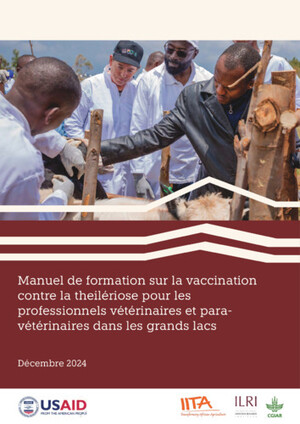
Ex ante impact of peste des petits ruminants control on micro and macro socioeconomic indicators in Senegal
Abstract
Vaccination is espoused as the effective control mechanism outlined in the Global Control and Eradication Strategy for peste des petits ruminants (PPR). However, extant studies assert that vaccination can be expensive; hence, the effectiveness of disease control may not necessarily translate to overall profit. Also, the consequences of PPR control on socioeconomic indicators like food and nutrition security at a macro national level is an important lacuna in the literature.
This study seeks to examine the ex ante impact of PPR control strategies on farm-level profitability and the socioeconomic consequences in relation to food and nutrition security at a national level in Senegal. A bi-level system dynamics model, compartmentalised into five modules consisting of integrated production-epidemiological, economics, disease control, marketing, and policy modules, was developed with the STELLA Architect® software, validated, and simulated for 30 years at a weekly timestep. The model was parameterised with data from household surveys from pastoral areas in Northern Senegal and relevant archival data. Nine vaccination scenarios were examined from three vaccination dimensions (vaccination coverage, vaccine wastage, and the provision of government subsidies).
This study’s findings indicate that, compared with a no-vaccination scenario, all the vaccination scenarios for both 26.5% (actual vaccination coverage) and 70% (expected vaccination coverage) resulted in a significant difference in the gross margin earnings and the potential per capita consumption for the supply of mutton and goat meat. At the prevailing vaccination coverage (with or without the provision of government subsidies), farm households will earn on average $69.43 (annually) more than the no-vaccination scenario, and the average per capita consumption for mutton and goat meat will increase by 1.13kg/person/year.
When the vaccination coverage is increased to the prescribed threshold for PPR eradication (i.e., 70%), with or without the provision of government subsidies, the average gross margin earnings will be $72.23 annually and the per capita consumption will increase by 0.1kg/person/year. To examine the impact of vaccine wastage, a within group comparison of the actual and expected vaccination coverage was conducted. The findings indicate that 10% of multiple vaccinations of the same animals will result in a decline in the; (i) average gross margin earnings (annually) by $11.37 and $12.98 for vaccination coverage of 26.5% and 70%, respectively; and (ii) per capita consumption by 0.3kg/person/year and 0.34kg/person/year for the vaccination coverage of 26.5% and 70%, respectively.
Considering that there was no statistically significant difference in the gross margin earnings and the potential per capita consumption when vaccination is performed with or without government subsidies, a sustainable strategy for PPR eradication will include the promotion of the benefits of vaccination via sensitization campaigns to stimulate farmers’ uptake of the practice.
Citation
Aboah, J., Apolloni, A., Duboz, R., Okoth, E. and Dione, M. 2022. Ex ante impact of peste des petits ruminants control on micro and macro socioeconomic indicators in Senegal. Poster presented at the Peste des petits ruminants Global Research and Expertise Network (PPR-GREN) meeting, Montpellier, France, 7–9 December 2022. Nairobi, Kenya: ILRI.










